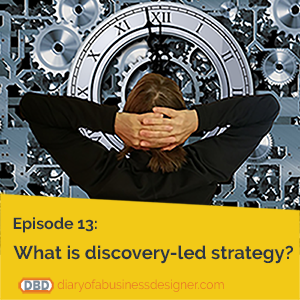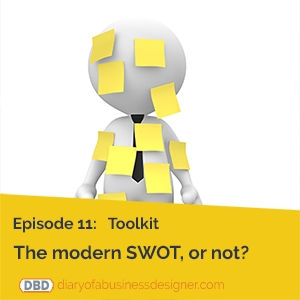The three horizons framework has remained an enduring means to inform business strategy and build long term sustainability.
In this episode I share my experiences where I used the three horizons to create business growth, identify innovation and pivot organisations. How have you used this framework?
Support Diary of a Business Designer
Key takeaways
What is 3 horizons
The three horizons framework—featured in The Alchemy of Growth, by Baghai, Coley, and White in 2000 —provides a structure for companies to assess potential opportunities for growth without neglecting performance in the present.
- Horizon one: represents the core business most readily identified in the company and provides the greatest profits and cash flow. Here the focus is on improving performance to maximize the remaining value.
- Horizon two: encompasses emerging opportunities, and potential entrepreneurial ventures likely to generate substantial profits in the future but that could require considerable investment.
- Horizon three: contains ideas for profitable growth down the road—for instance, small ventures such as research projects, pilot programs, or minority stakes in new businesses.
Three horizons framework has been used for innovation
- Horizon 1 (H1) refers to the present to defend the current core business from competition and disruption in the short term, called “sustaining innovations
- Horizon 2 (H2) is all about those emerging opportunities “disruptive innovation” requiring an entrepreneurial mindset.
- Horizon 3 (H3) is the future without restrictions and new emerging termed “transformative innovation”.
Another interesting articled: Three horizons for business model change.
Evolved over time – In the past we assigned relative delivery time to each of the Horizons. Today disruptive Horizon 3 ideas can be delivered as fast as ideas for Horizon 1 in the existing product line. Horizon 3 disruption is most often used not by the market leaders but by the challengers and new entrants (refer Steve Blank).
My case studies:
Opportunities for Growth, NOT INNOVATION or DISRUPTION
In most cases, I have worked in H1 near-term incremental business improvement/ product improvement innovation. Eg classroom training to online LMS training or in H2 Adjacency growth onto the known domain
- Refer E7: customer journey map how adjacency opportunities might present themselves
- Refer E4: white label example, another H2 growth opportunity
Innovation towards future state
In a few instances I have worked in a business which had a clear mandate to change from the status quo, to prepare for a sustainable future, to allocate resource, effort and investment into innovation
- In urgent need to find a new business model
- We identified an emerging trend of the future
- With covid, which was a new territory catalyst
Side benefit I learned was to use it for Resource and skills allocation
- Under and over skills in any line-of-business
- Imbalances on H1, 2, H3 capacity
- Budget allocation across each
And then there is identifying Box 2
I am a fan of Vijay Govindarajan’s book ‘The Three Box Solution’ urged forward-looking CEOs to manage reinvention with a “three-box approach”:
Books Amazon
- The Alchemy of Growth – Baghai, Coley, and White
- The Three-Box Solution – Govindarajan, Vijay
Timestamps:
- [00:46] – Three horizons framework description
- [02:08] – Three horizons for innovation
- [03:59] – Three horizons evolution over time
- [05:29] – Case study – Horizon 1 for business model improvement
- [06:22] – Case study – Horizon 2 for adjacency growth
- [07:10] – Case study – Innovation for future-state business
- [08:30] – Side benefits – resource planning
- [09:51] – What is Box 2?




0 Comments